Harvesting Machines for Maximum Yield in Minimum Time: A Revolution in Rice Farming.
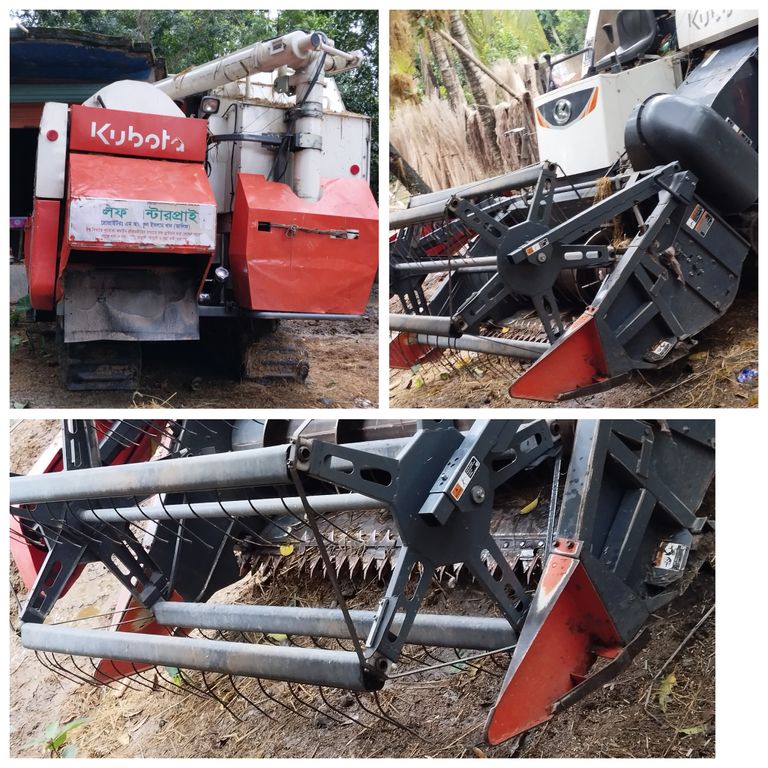
In the world of agriculture, rice farming has long been a labor-intensive activity, requiring significant time, effort, and human resources to ensure a successful harvest. Traditionally, manual labor was used for harvesting, which involved bending over the fields, cutting the crops by hand, and collecting the rice stalks. This process was not only time-consuming but also physically exhausting, with risks of crop loss due to inefficiency, weather conditions, or delayed harvesting. However, technological advancements in the agricultural sector have transformed this scenario, introducing modern rice harvesting machines that help farmers save both time and effort while maximizing their yields.
One such innovation is the rice harvesting machine. These machines are engineered to address the core challenges of traditional farming practices by drastically reducing the time required for cutting, collecting, and processing rice crops. Let's explore how these machines are transforming the rice farming landscape and helping farmers achieve more in less time.
The Need for Efficient Harvesting Solutions
Rice is a staple food for more than half of the world's population, making it a crucial agricultural commodity. In countries like Bangladesh, India, China, and other rice-producing nations, the demand for rice has consistently been on the rise. As a result, farmers are under constant pressure to increase their production to meet both domestic and global demands.
Manual rice harvesting, though still practiced in some regions, presents several challenges:
- Time-Consuming: The traditional method of using sickles to cut rice stalks is slow and labor-intensive. It often takes days or weeks to harvest a single field, depending on its size.
- Labor Shortage: In many rural areas, there is a shortage of farm labor due to urban migration, leading to a higher reliance on machinery.
- Weather Dependency: Delays in harvesting increase the risk of crop damage due to unexpected rain, storms, or other adverse weather conditions.
- Yield Loss: Manual harvesting can lead to grain loss due to improper handling, which directly impacts the farmers' income and the total yield.
Given these challenges, the introduction of rice harvesting machines, or combine harvesters, has revolutionized rice farming by addressing these issues efficiently.
Types of Rice Harvesting Machines
Modern rice harvesting machines come in various types, each designed to suit different scales of farming and terrain. The most commonly used machines include:
Combine Harvester: A combine harvester is an all-in-one machine that combines three essential tasks—reaping, threshing, and winnowing. This machine can cut the rice stalks, separate the grains from the stalk, and clean the grains all in one go. It drastically reduces the time needed for the harvesting process. Combine harvesters come in different sizes, with large-scale versions designed for vast fields and smaller, more compact models suited for smaller farms.
Rice Reaper: A rice reaper is a smaller, more specific machine designed solely for cutting the rice stalks. This machine is ideal for farmers who have separate arrangements for threshing and winnowing. While not as versatile as a combine harvester, a rice reaper significantly reduces the time and labor required for cutting rice crops.
Mini Combine Harvester: As the name suggests, a mini combine harvester is a smaller version of the full-scale combine harvester. It is designed for small to medium-sized farms. This machine is highly efficient and cost-effective for small-scale farmers who may not have the capital to invest in a large harvester but still want to benefit from modern technology.
Self-Propelled Rice Transplanters with Harvesting Features: Some modern rice farming equipment comes with dual features, allowing the machine to both transplant and harvest rice crops. These machines are designed for maximum efficiency and are often used in regions where labor is scarce.
How Rice Harvesting Machines Work
Rice harvesting machines are designed to make the harvesting process fast and efficient, with minimal wastage. Here’s how they generally operate:
Reaping: The machine cuts the rice plants at the base, collecting them into the harvester. Depending on the model, the machine may be self-propelled or operated manually.
Threshing: Once the rice stalks are cut, they are fed into the thresher section of the machine. The thresher separates the rice grains from the stalks, leaving behind the straw. This process is much faster than manual threshing, which traditionally involves beating the stalks to separate the grains.
Winnowing: After threshing, the winnowing process removes the chaff (the husk or outer shell) from the grains. The cleaned rice grains are then collected, ready for drying and further processing.
Straw Management: Many modern combine harvesters come with built-in straw management systems, which chop the leftover straw into smaller pieces, making it easier for farmers to manage field residues. The straw can then be used for animal feed, mulching, or composting.
Benefits of Rice Harvesting Machines
Time Efficiency: One of the most significant advantages of using a rice harvesting machine is the drastic reduction in the time needed for harvesting. A task that would typically take days or even weeks can now be completed in hours, allowing farmers to quickly move on to other essential activities such as field preparation for the next crop cycle.
Increased Yield: With the precision and speed of modern harvesters, there is less crop loss during harvesting. The reduced grain loss means farmers can maximize their yields, which translates to higher income and better food security.
Reduced Labor Costs: The use of machines helps reduce the need for manual labor, which can be scarce or expensive in many regions. Even though the initial investment in a machine may seem high, the long-term savings in labor costs often make it a worthwhile investment.
Versatility: Modern rice harvesters are versatile machines that can be used in a variety of field conditions, from small, irregularly shaped fields to large, flat areas. This versatility allows farmers to use the machines in different types of terrain and weather conditions.
Improved Farmer Well-being: The use of machines reduces the physical strain on farmers, who would otherwise have to perform backbreaking manual labor for long hours. With mechanized harvesting, farmers can work more comfortably and efficiently, improving their overall quality of life.
Challenges and Considerations
While rice harvesting machines offer numerous benefits, there are some challenges to consider:
Initial Investment: The cost of purchasing a rice harvester can be high, especially for small-scale farmers. However, many governments and agricultural organizations offer subsidies or financing options to help farmers invest in modern equipment.
Maintenance and Operation: Like any machinery, rice harvesters require regular maintenance to function properly. Farmers need to be trained on how to operate and maintain these machines to ensure they work efficiently.
Field Suitability: Not all fields are suitable for large combine harvesters. In areas with uneven terrain or small plots, smaller or more specialized machines may be required.
Environmental Impact: While machines can improve efficiency, they may also have environmental impacts, such as increased fuel consumption and emissions. Sustainable farming practices and the use of energy-efficient machines can help mitigate these concerns.
Conclusion: The Future of Rice Harvesting
Rice harvesting machines have revolutionized the way rice is harvested, making the process faster, more efficient, and less labor-intensive. As technology continues to evolve, we can expect even more advanced machines that will further enhance productivity and sustainability in rice farming.
For farmers looking to increase their yield and efficiency, investing in a rice harvesting machine is a smart choice. While the initial costs may seem high, the long-term benefits in terms of time saved, increased yield, and reduced labor costs make these machines an essential tool in modern agriculture.
In the future, we may see even more innovations, such as AI-driven harvesters or machines powered by renewable energy sources, further pushing the boundaries of what’s possible in the world of rice farming.
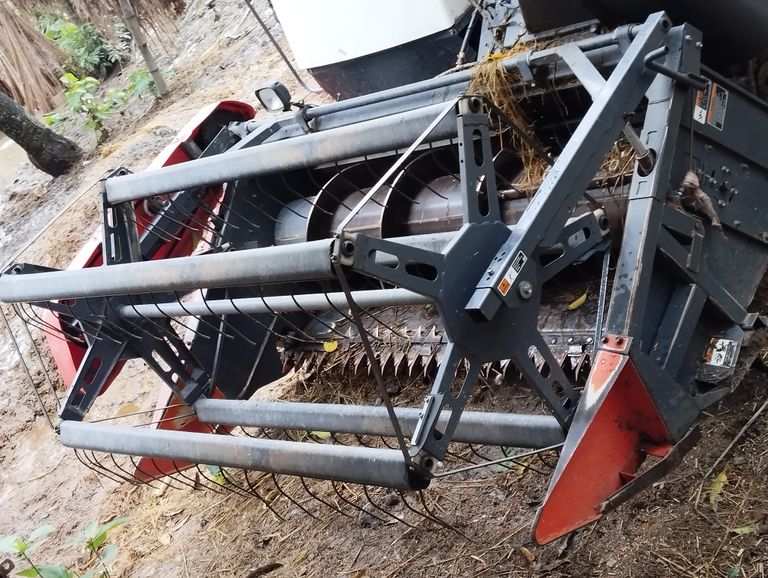
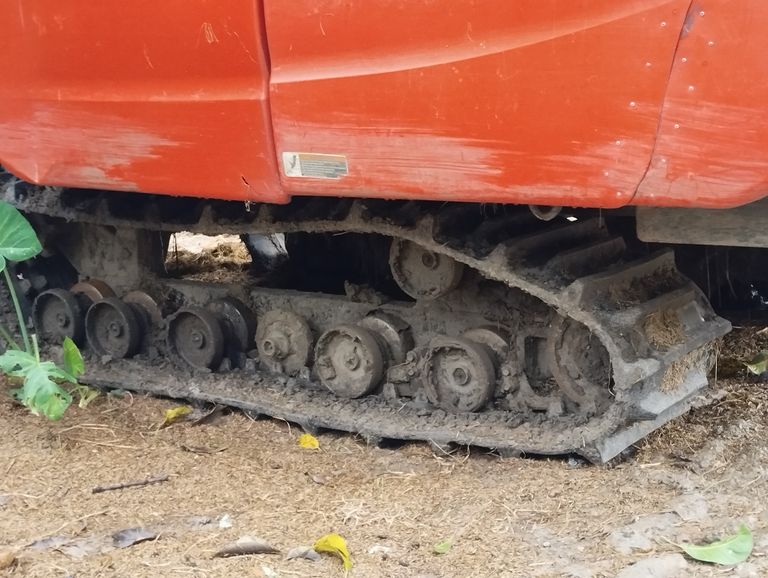
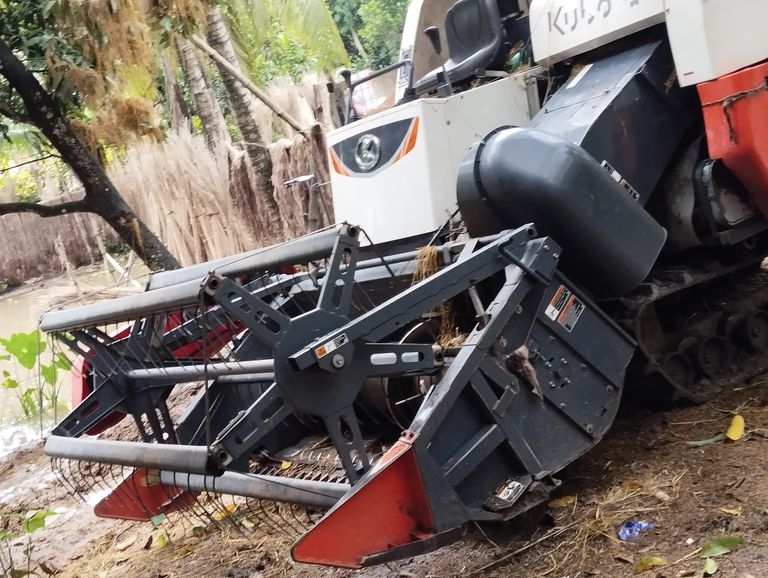
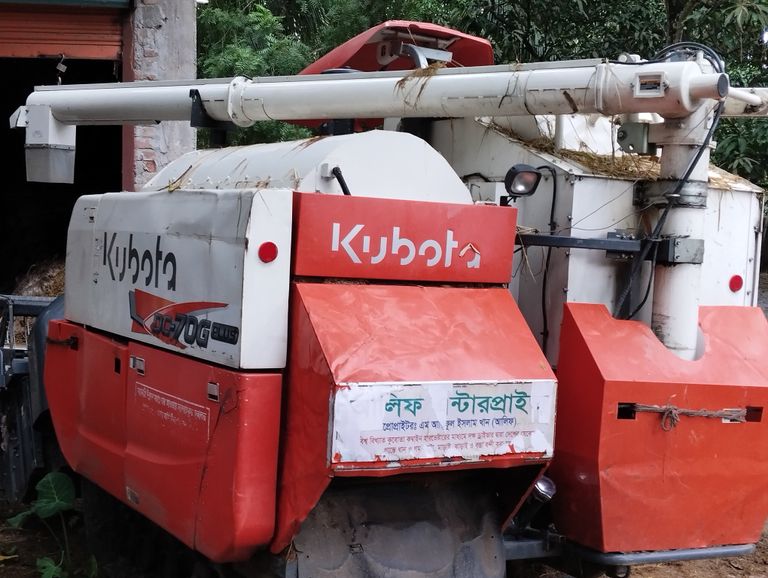
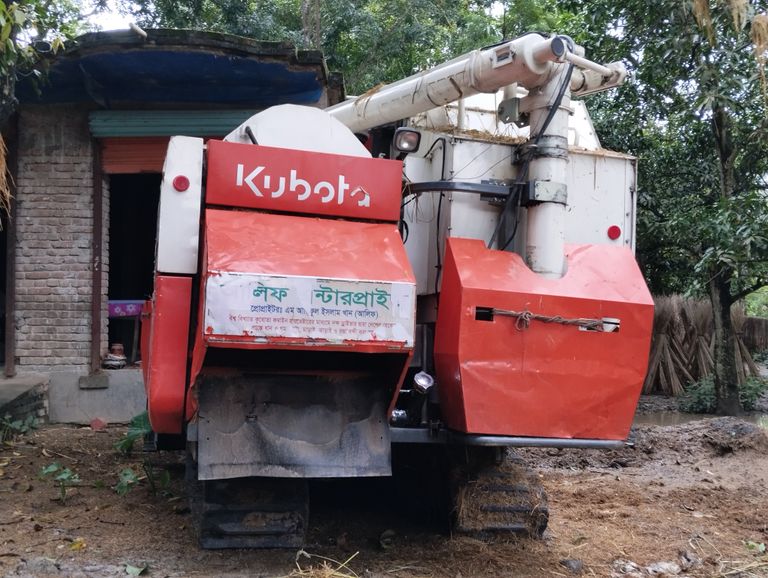
Wheels of Rice Harvesting Machines: An In-Depth Look
Rice harvesting is a crucial stage in the agricultural process, and over the years, advancements in technology have streamlined the process to improve efficiency and reduce manual labor. One of the most significant innovations in this regard is the development of rice harvesting machines. These machines come equipped with various components that work together to carry out the harvesting process efficiently. Among these components, the wheels play a critical role in ensuring the smooth operation and maneuverability of the machine in diverse field conditions.
In this blog, we will delve into the details of the wheels used in rice harvesting machines, their design, functionality, and how they contribute to the overall performance of the machine.
Importance of Wheels in Rice Harvesting Machines
Rice harvesting machines, also known as combine harvesters, are designed to operate in wet, muddy, and sometimes uneven fields. These conditions pose a significant challenge, as the machine needs to maintain stability and mobility without causing damage to the crop or getting stuck in the field. The wheels of these machines are therefore specially designed to handle such environments.
The primary functions of the wheels in rice harvesting machines are:
- Mobility: The wheels allow the machine to move across the field while harvesting. They need to provide smooth movement over uneven and wet terrain to ensure that the harvesting process is not interrupted.
- Traction: Given the often slippery and muddy nature of rice fields, the wheels must provide sufficient traction to prevent the machine from slipping or getting stuck.
- Stability: The wheels must ensure that the machine remains stable, even when working on slopes or uneven ground. This is essential to avoid tipping over and causing damage to the machine or the crop.
- Load Bearing: The machine, especially when fully loaded with harvested rice, can be quite heavy. The wheels must be able to bear this load without sinking into the mud or damaging the field.
Types of Wheels Used in Rice Harvesting Machines
Wheels used in rice harvesting machines can be broadly categorized into three types:
Rubber Tires: These are the most common type of wheels used in modern rice harvesting machines. Rubber tires are preferred for their durability, flexibility, and ability to provide traction in muddy fields. Some machines are equipped with wide, low-pressure rubber tires to distribute the weight of the machine evenly and reduce the risk of sinking in wet fields. The tread design on these tires is also optimized for wet conditions, providing maximum grip.
Metal Tracks (Caterpillar Tracks): In some cases, especially in extremely muddy or swampy fields, rubber tires may not provide sufficient traction. In such cases, rice harvesting machines may be equipped with metal tracks, similar to those used in bulldozers or tanks. These tracks provide better stability and traction in difficult field conditions. However, machines with tracks tend to be slower and more expensive to maintain compared to rubber-tired machines.
Hybrid Systems: Some machines use a combination of rubber tires and metal tracks to optimize performance. These hybrid systems are designed to provide the benefits of both types of wheels – the speed and maneuverability of rubber tires, and the traction and stability of metal tracks.
Design Considerations for Rice Harvester Wheels
The design of the wheels on rice harvesting machines is not arbitrary. It involves careful consideration of several factors to ensure optimal performance. Some of the key design considerations include:
Tread Pattern: The tread pattern on the wheels plays a crucial role in providing traction. In rice fields, where the soil is often soft and muddy, deep treads are essential to prevent slippage. The tread pattern is designed to channel mud and water away from the contact surface, ensuring that the wheels maintain a good grip on the ground.
Tire Width: Wider tires are generally preferred in rice harvesting machines as they help distribute the weight of the machine more evenly across the surface. This prevents the machine from sinking into the mud, which can be a common problem in wet fields. Wider tires also provide better stability, which is important when operating on uneven ground.
Low-Pressure Tires: Many rice harvesting machines use low-pressure tires, which are designed to reduce soil compaction. Compacted soil can damage the rice plants and reduce yields, so it is important for the wheels to minimize their impact on the field. Low-pressure tires achieve this by spreading the weight of the machine over a larger surface area.
Durability: Rice fields can be harsh environments for machinery, with mud, water, and rough terrain putting a lot of strain on the wheels. The materials used in the construction of the wheels, especially rubber tires, need to be highly durable to withstand these conditions without suffering from excessive wear and tear.
Adjustable Ground Clearance: Some rice harvesting machines come with adjustable ground clearance, which allows the operator to raise or lower the machine depending on the field conditions. In muddy fields, raising the ground clearance can help prevent the wheels from getting bogged down, while in drier conditions, lowering the clearance can improve stability and performance.
Challenges and Solutions for Rice Harvester Wheels
While the wheels on rice harvesting machines are designed to handle a wide range of field conditions, they are not without their challenges. Some of the common issues faced by farmers using rice harvesters include:
Getting Stuck in Mud: One of the most common problems in rice fields is the machine getting stuck in the mud. This can be a significant setback, as it may require manual intervention to free the machine, leading to delays and increased labor costs. To mitigate this issue, manufacturers are continually working on improving the traction and flotation capabilities of the wheels. Wider, low-pressure tires and metal tracks are some of the solutions to this problem.
Soil Compaction: As mentioned earlier, soil compaction can negatively impact crop yields. While low-pressure tires help reduce compaction, it remains a challenge, especially in wet fields where the machine's weight can cause the wheels to sink and compact the soil. Some farmers opt for dual-wheel configurations or even tracked machines to further reduce compaction.
Maintenance: The harsh conditions in rice fields can take a toll on the wheels, particularly rubber tires. Regular maintenance is essential to ensure that the wheels remain in good condition and do not suffer from excessive wear and tear. Farmers need to check the tread depth, tire pressure, and overall condition of the wheels regularly to avoid breakdowns during harvesting.
Future Trends in Rice Harvester Wheel Technology
As technology continues to evolve, we can expect to see further innovations in the design and functionality of wheels used in rice harvesting machines. Some of the future trends that may emerge include:
Smart Tires: With the advent of precision agriculture, smart tires equipped with sensors could become a common feature in rice harvesters. These tires could monitor parameters such as tire pressure, tread wear, and soil conditions in real-time, providing valuable data to the operator and helping to optimize performance.
Improved Materials: Advances in material science could lead to the development of new tire materials that offer better durability, traction, and resistance to wear and tear. These materials could help extend the lifespan of the wheels and reduce maintenance costs for farmers.
Autonomous Harvesters: As autonomous farming equipment becomes more prevalent, the wheels of rice harvesters may need to be adapted to work with self-driving systems. This could involve the integration of GPS and other navigation technologies to ensure that the machine moves efficiently across the field without human intervention.
Conclusion
The wheels of rice harvesting machines are a critical component that significantly impacts the machine's performance in the field. Designed to provide mobility, traction, stability, and load-bearing capacity, these wheels must be able to handle the challenging conditions often found in rice fields. With ongoing advancements in technology, we can expect to see further improvements in the design and functionality of rice harvester wheels, making the harvesting process even more efficient and sustainable for farmers.
By understanding the importance of the wheels and staying updated with the latest innovations, farmers can make informed decisions about the equipment they use, ensuring that their rice harvesting operations run smoothly and effectively.
Please submit your country name.
To give our community verified tag first you need to share identity post.